Reactive Oxygen Species
Reactive oxygen species (ROS), such as superoxide anion (O2-), hydrogen peroxide (H2O2), and hydroxyl radical (HO•), consist of radical and non-radical oxygen species formed by the partial reduction of oxygen. Cellular ROS are generated endogenously during mitochondrial oxidative metabolism as well as in cellular response to xenobiotics, cytokines, and bacterial invasion.
ROS also activates MAPK pathways by the direct inhibition of MAPK phosphatases. Through PTEN, the PI3K pathway is subject to reversible redox regulation by ROS generated by growth factor stimulation. The activation of autophagy may be a cellular defense mechanism in response to ROS.
Ziele für Reactive Oxygen Species
Produkte für Reactive Oxygen Species
- Bestell-Nr. Artikelname Informationen
-
GC41623
β-Elemonic Acid
β-Elemonic Acid ist ein aus Boswellia papyrifera isoliertes Triterpen.
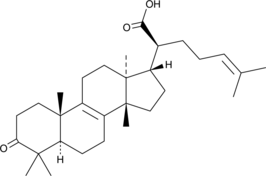
-
GC41502
β-Myrcene
β-Myrcen (β-β-Myrcen), eine aromatische flüchtige Verbindung, unterdrückt die TNFα-induzierte NF-κB-Aktivität.

-
GC67191
(±)-α-Tocopherol nicotinate
(±)-α-Tocopherolnicotinat, Vitamin E-Nicotinat, ist ein oral wirksames fettlösliches Antioxidans, das die Lipidperoxidation in Zellmembranen verhindert. (±)-α-Tocopherolnicotinat wird im Blut zu α hydrolysiert; -Tocopherol und Niacin und kann in Studien verwandter Gefäßerkrankungen verwendet werden.
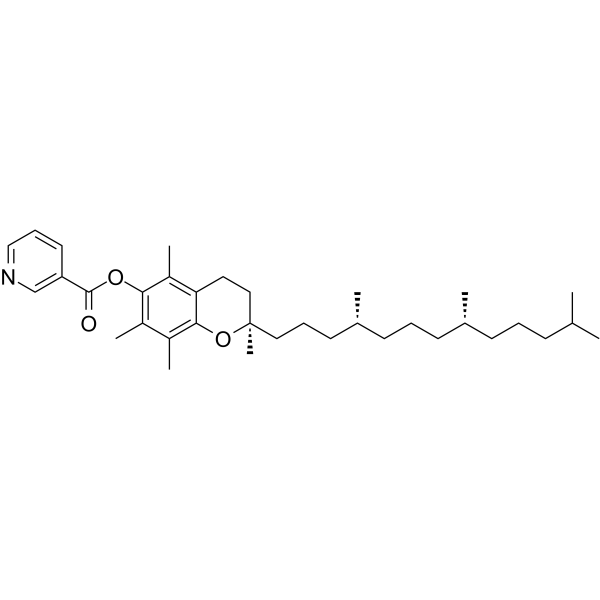
-
GC39271
(±)-Naringenin
(±)-Naringenin ist ein natürlich vorkommendes Flavonoid.
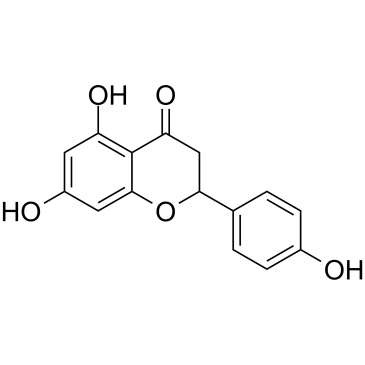
-
GC40355
(±)13-HpODE
(±)13-HpODE (13-Hydroperoxylinolsäure) ist ein racemisches Gemisch von Hydroperoxiden, das durch die Oxidation von Linolsäure durch Lipoxygenase hergestellt wird.

-
GC40809
(+)-β-Citronellol
(+)-β-Citronellol (D-Citronellol) ist ein alkoholisches Monoterpen, das in Ätherischem GeranienÖl vorkommt.

-
GC63969
(+)-Schisandrin B
(+)-Schisandrin B ist ein Enantiomer von Schisandrin B.
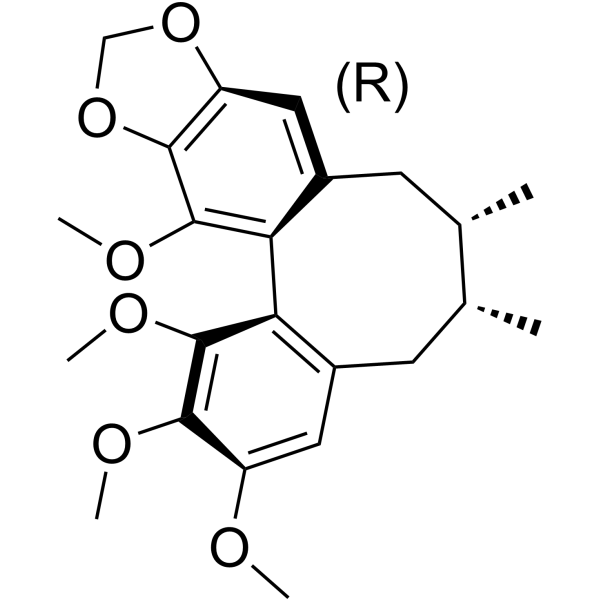
-
GC14049
(-)-Epigallocatechin gallate (EGCG)
Ein Phenol mit vielfältigen biologischen Aktivitäten.
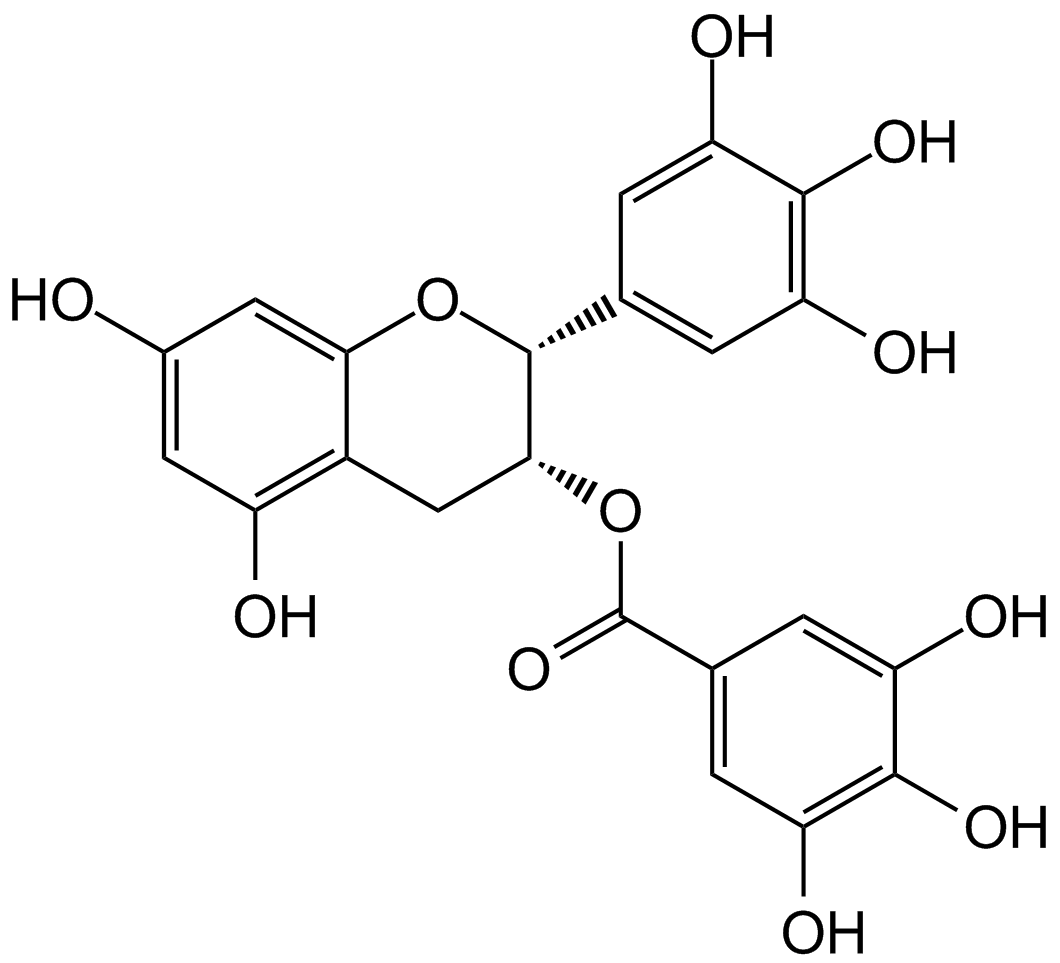
-
GC45248
(-)-FINO2
(-)-FINO2 ist ein potenter Ferroptose-Induktor. (-)-FINO2 hemmt die AktivitÄt von GPX4. (-)-FINO2 ist ein stabiles Oxidationsmittel, das Eisen oxidiert und bei unterschiedlichen pH-Werten stabil ist. (-)-FINO2 verursacht eine weit verbreitete Lipidperoxidation.

-
GC38316
(-)-Limonene
(-)-Limonen ((S)-(-)-Limonen) ist ein Monoterpen, das in vielen KiefernnadelÖlen und in Terpentin vorkommt.
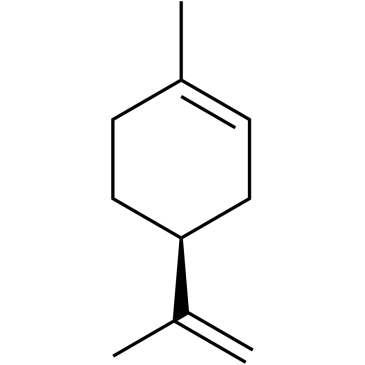
-
GC41700
(E)-2-(2-Chlorostyryl)-3,5,6-trimethylpyrazine
(E)-2-(2-Chlorostyryl)-3,5,6-trimethylpyrazine (CSTMP) is a stilbene derivative with antioxidant and anticancer activities.
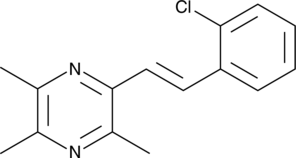
-
GC61668
(E)-3,4-Dimethoxycinnamic acid
(E)-3,4-DimethoxyzimtsÄure ist das weniger aktive Isomer von 3,4-DimethoxyzimtsÄure.
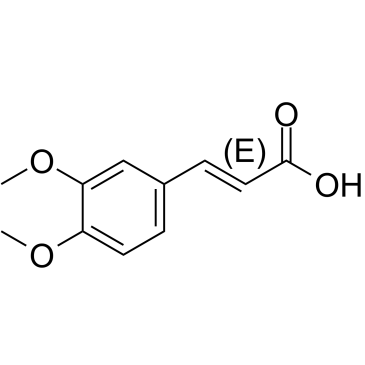
-
GC39747
(E/Z)-GSK5182
(E/Z)-GSK5182 ist eine racemische Verbindung der (E)-GSK5182- und (Z)-GSK5182-Isomere.
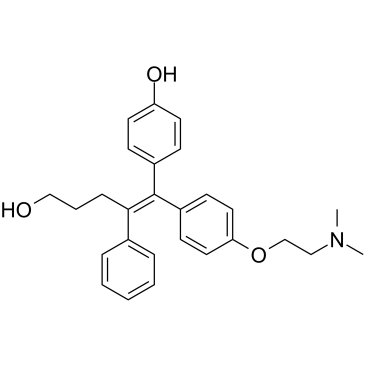
-
GC41721
(R)-α-Lipoic Acid
(R)-α-Lipoic acid is the naturally occurring enantiomer of lipoic acid, a cyclic disulfide antioxidant.

-
GC41837
1,3,7-Trimethyluric Acid
1,3,7-TrimethylursÄure ist der Metabolit von Koffein. Das metabolische VerhÄltnis von 1,3,7-TrimethylursÄure zu Koffein kann als Biomarker zur Beschreibung der VariabilitÄt der CYP3A-AktivitÄt in einer Kohorte ausgewertet werden.
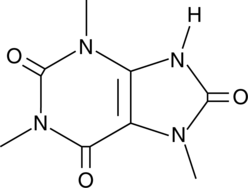
-
GC46387
1,3,7-Trimethyluric Acid-d9
An internal standard for the quantification of 1,3,7-trimethyluric acid
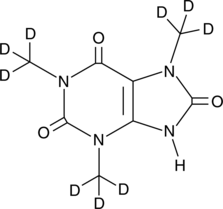
-
GC35037
1,3-Dicaffeoylquinic acid
1,3-DicaffeoylchinasÄure ist ein CaffeoylchinasÄure-Derivat und aktiviert PI3K/Akt.
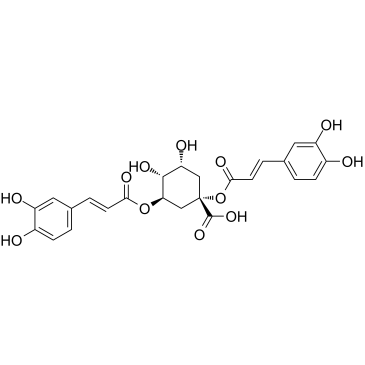
-
GC46481
1-Hydroxyphenazine
A P. aeruginosa virulence factor
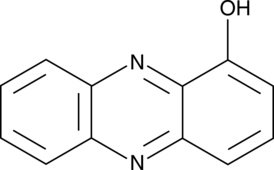
-
GC18235
1-O-Hexadecyl-sn-glycerol
1-O-Hexadecyl-sn-glycerol is a bioactive alkyl glyceryl ether.
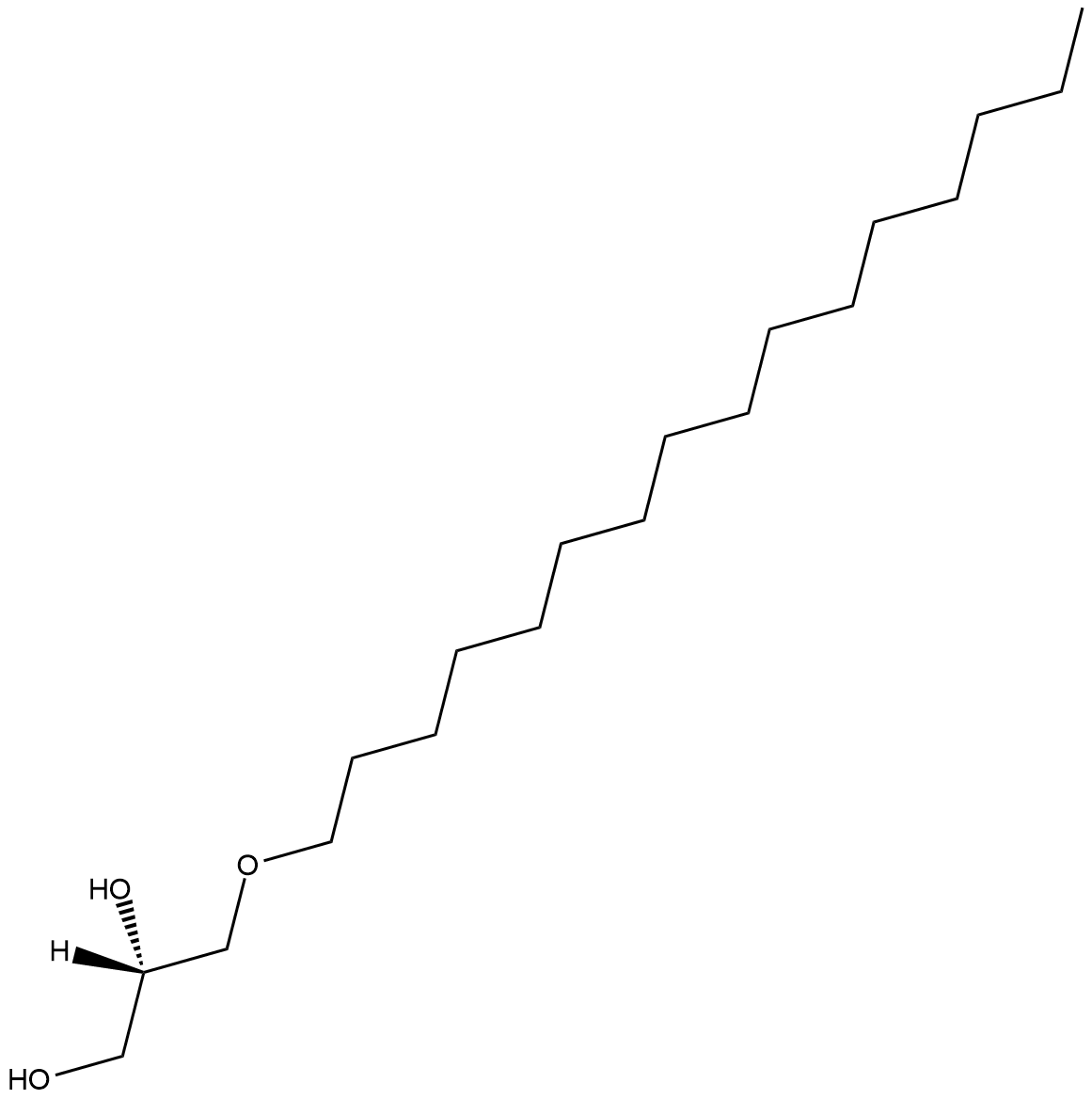
-
GC40146
1-Oleoyl-2-Palmitoyl-rac-glycerol
1-Oleoyl-2-palmitoyl-rac-glycerol (1,2-OP) is a diacylglycerol containing oleic acid at the sn-1 position and palmitic acid at the sn-2 position.

-
GC41866
10-methyl-9-(phenoxycarbonyl) Acridinium (trifluoromethylsulfonate)
10-methyl-9-(phenoxycarbonyl) Acridinium is an acridinium ester that produces fluorescent 10-methyl-9-acridone upon oxidation with hydrogen peroxide, persulfates, and other oxidants in alkaline conditions.
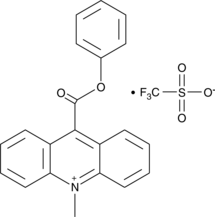
-
GC41868
10-Nitrooleate
10-Nitrooleat (CXA-10), eine NitrofettsÄure, hat potenzielle Wirkungen bei KrankheitszustÄnden, bei denen oxidativer Stress, EntzÜndungen, Fibrose und/oder direkte GewebetoxizitÄt eine bedeutende Rolle spielen.

-
GC67628
2',7'-Dichlorofluorescein
2',&7#39;-Dichlorfluorescein fungiert als Fluoreszenzsonde (Ex \u003d 496 nm und Em \u003d 525 nm) für die Messung reaktiver Sauerstoffspezies (ROS).
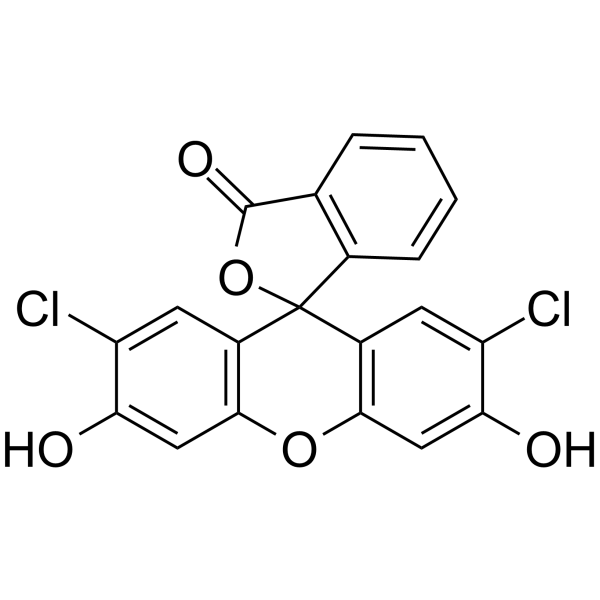
-
GC42079
2',7'-Dichlorofluorescein diacetate
2',7'-Dichlorfluoresceindiacetat (DCFH-DA) ist eine zellgängige Fluoreszenzsonde.
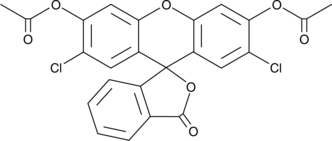
-
GC46057
2,5-Dihydroxycinnamic Acid phenethyl ester
An inhibitor of 5-LO

-
GC35095
2-Phospho-L-ascorbic acid trisodium salt
2-Phospho-L-AscorbinsÄure-Trinatriumsalz (2-Phospho-L-AscorbinsÄure-Trinatrium) ist ein lang wirkendes Vitamin-C-Derivat, das die Kollagenbildung und -expression stimulieren kann.
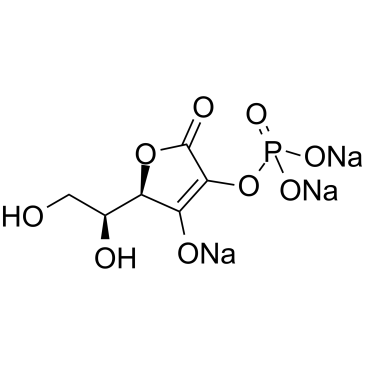
-
GC49005
2S-Eriodictyol
A flavanone with antioxidant activity
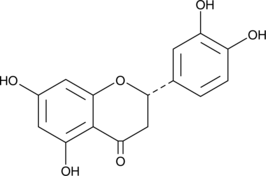
-
GN10006
3,4-Dihydroxybenzaldehyde
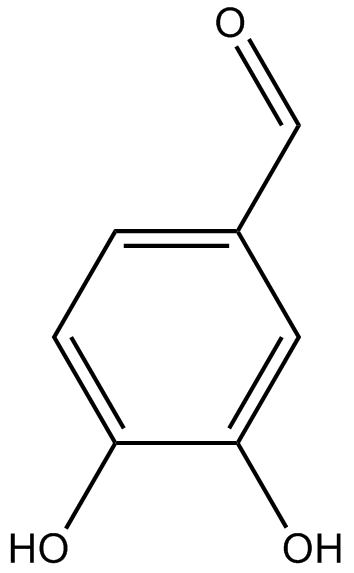
-
GC33992
3,4-Dimethoxycinnamic acid (O-Methylferulic acid)
3,4-DimethoxyzimtsÄure (O-MethylferulasÄure) (O-MethylferulasÄure) ist ein Monomer, das aus Securidaca inappendiculata Hassk extrahiert und gereinigt wird.
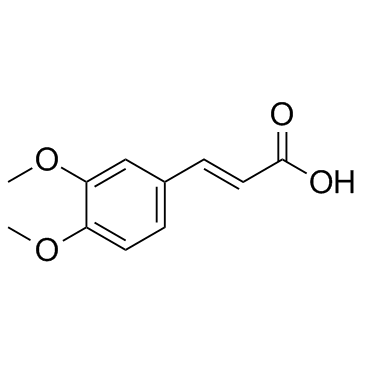
-
GC61673
3,5-Di-tert-butylphenol
3,5-Di-tert-butylphenol ist eine flÜchtige organische Verbindung mit antibiofilm- und antimykotischen AktivitÄten.
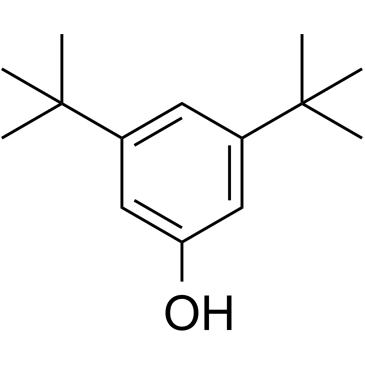
-
GC52324
3-(3-Hydroxyphenyl)propionic Acid sulfate
A metabolite of certain phenols and glycosides

-
GC14282
3-acetyl-11-keto-β-Boswellic Acid
3-Acetyl-11-keto-β-BoswelliasÄure (Acetyl-11-keto-β-BoswelliasÄure) ist eine aktive Triterpenoidverbindung aus dem Extrakt von Boswellia serrate und ein neuartiger Nrf2-Aktivator.
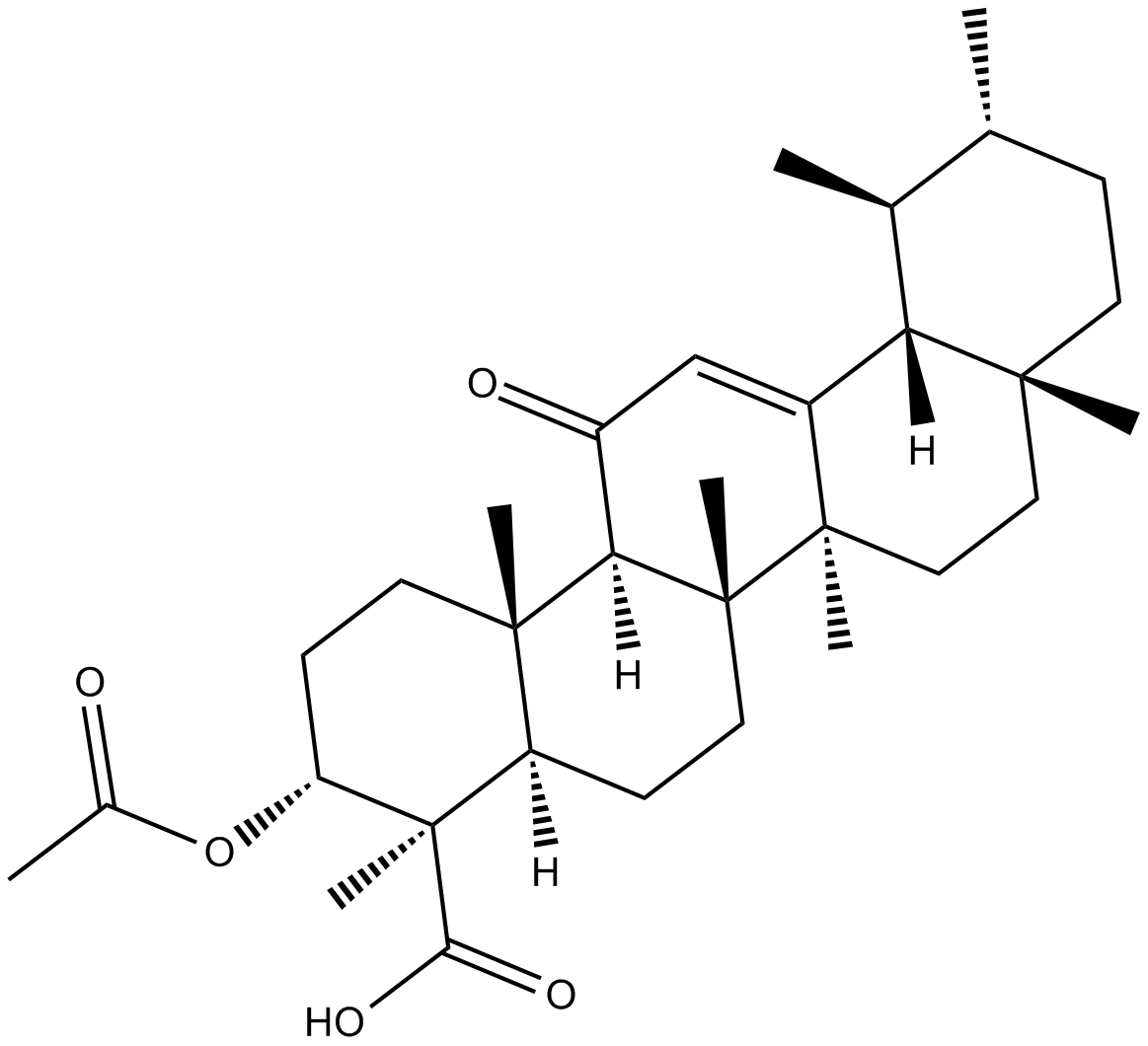
-
GC49849
3-Aminosalicylic Acid
A salicylic acid derivative
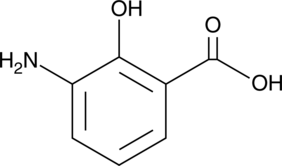
-
GC62794
3-Demethylcolchicine
3-Demethylcolchicin, ein Colchicin-Metabolit, besitzt eine Hydroxygruppe an seinem Kohlenstoffring, die am RadikalfÄnger teilnehmen kÖnnte und das Carrageenin-Ödem deutlich hemmt.
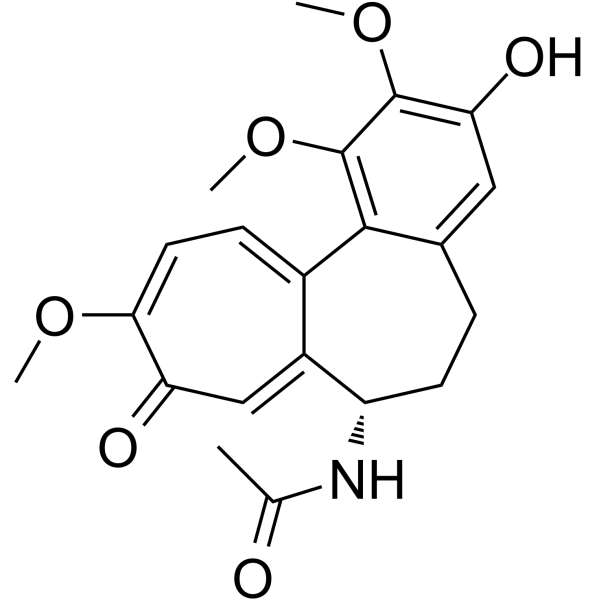
-
GC49364
3-Hydroxycoumarin
3-Hydroxycumarin ist ein starker Redox-Inhibitor von menschlichem 15-LOX-1.
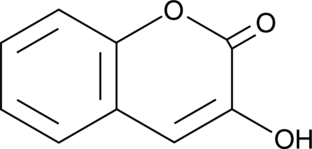
-
GC45337
3-Hydroxyterphenyllin
3-Hydroxyterphenyllin ist ein Metabolit von Aspergillus candidus. 3-Hydroxyterphenyllin unterdrÜckt die Proliferation und verursacht ZytotoxizitÄt gegenÜber A2780/CP70- und OVCAR-3-Zellen. 3-Hydroxyterphenyllin induziert S-Phasen-Arrest und Apoptose. 3-Hydroxyterphenyllin hat das Potenzial fÜr die Erforschung von Eierstockkrebs.
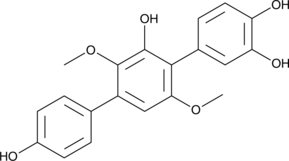
-
GC31290
3-Indolepropionic acid
3-IndolpropionsÄure hat sich als starkes Antioxidans erwiesen und hat Potenzial bei der Behandlung der Alzheimer-Krankheit.
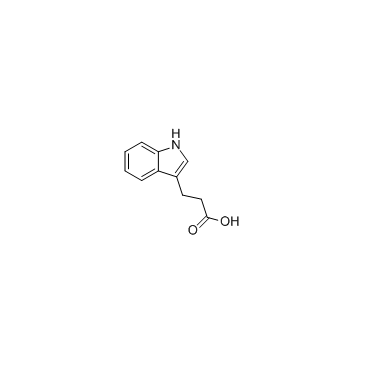
-
GC42338
4-Aminobenzoic Acid hydrazide
4-AminobenzoesÄurehydrazid ist ein irreversibler MPO-Myeloperoxidase-Hemmer mit einem IC50-Wert von 0,3 μM.
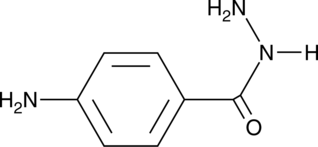
-
GC42351
4-carboxy TEMPO
4-carboxy TEMPO is a nitroxide and spin label.
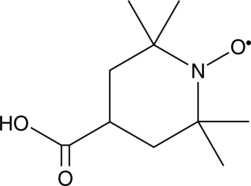
-
GC42401
4-hydroperoxy Cyclophosphamide
Ein aktiviertes Analogon von Cyclophosphamid.
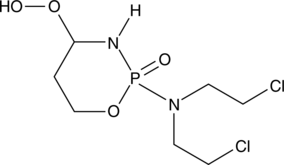
-
GC18858
4-hydroxy Alternariol
4-hydroxy Alternariol is a metabolite of the mycotoxin alternariol formed through cytochrome P450 (CYP450) metabolism.
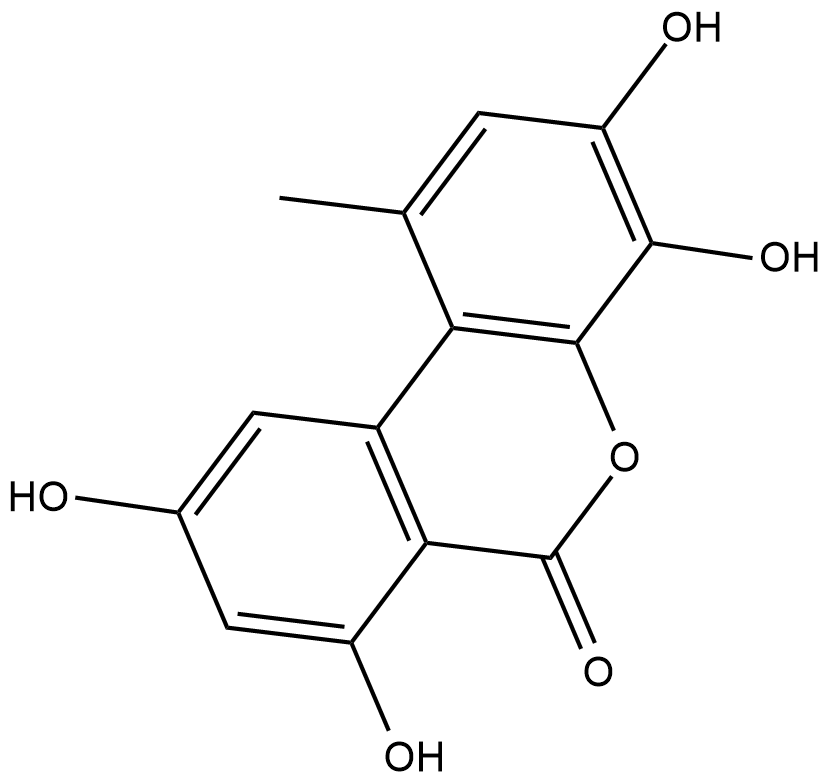
-
GC40477
4-Thiouracil
4-Thiouracil is a site-specific, photoactivatable probe used to detect RNA structures and nucleic acid-nucleic acid contacts.
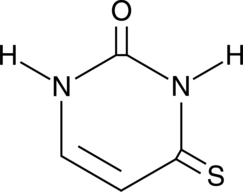
-
GC49339
5(6)-Carboxy-2′,7′-dichlorofluorescein diacetate
5(6)-Carboxy-&2#8242;,7′-Dichlorfluoresceindiacetat ist ein zellgängiger Fluoreszenzindikator.
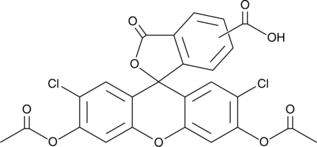
-
GC52227
5-(3',4'-Dihydroxyphenyl)-γ-Valerolactone
An active metabolite of various polyphenols

-
GC45357
5-Chlorouracil
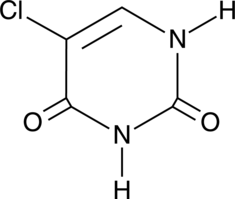
-
GC49233
5-Feruloylquinic Acid
5-FeruloylchinasÄure (5-FQA) besitzt antioxidative Wirkungen und tyrosinasehemmende AktivitÄten.
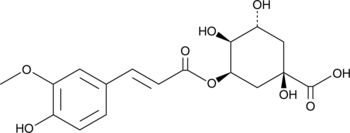
-
GC39760
5-Galloylquinic acid
5-GalloylchinasÄure, ein HauptfÄnger der reaktiven Sauerstoffspezies (ROS) in grÜnem Tee.
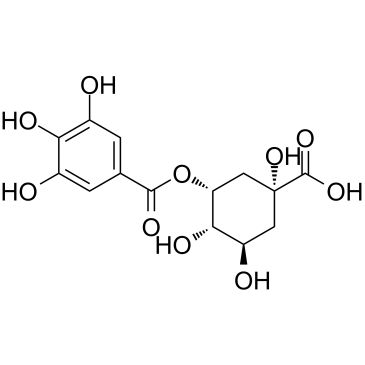
-
GC46033
5-Heneicosylresorcinol
An alkylresorcinol

-
GC61638
5-Hydroxyoxindole
5-Hydroxyoxindol ist ein strukturelles Analogon von HarnsÄure.
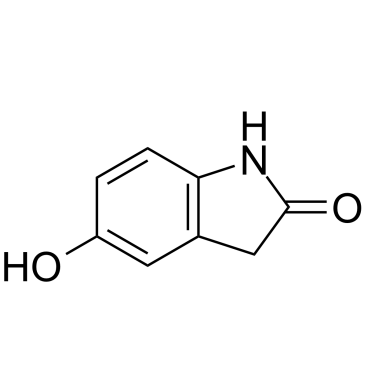
-
GC46079
5-Tricosylresorcinol
5-Tricosylresorcin ist das erste Zystenlipid.

-
GC49864
6-Methylpterin
A derivative of folic acid
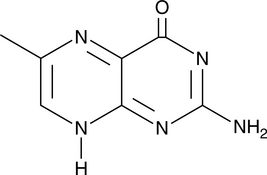
-
GC18776
6α-hydroxy Cholesterol
6α-hydroxy Cholesterol is an oxysterol that increases superoxide anion production in SK-N-BE cells when used at concentrations of 50 and 100 μM.
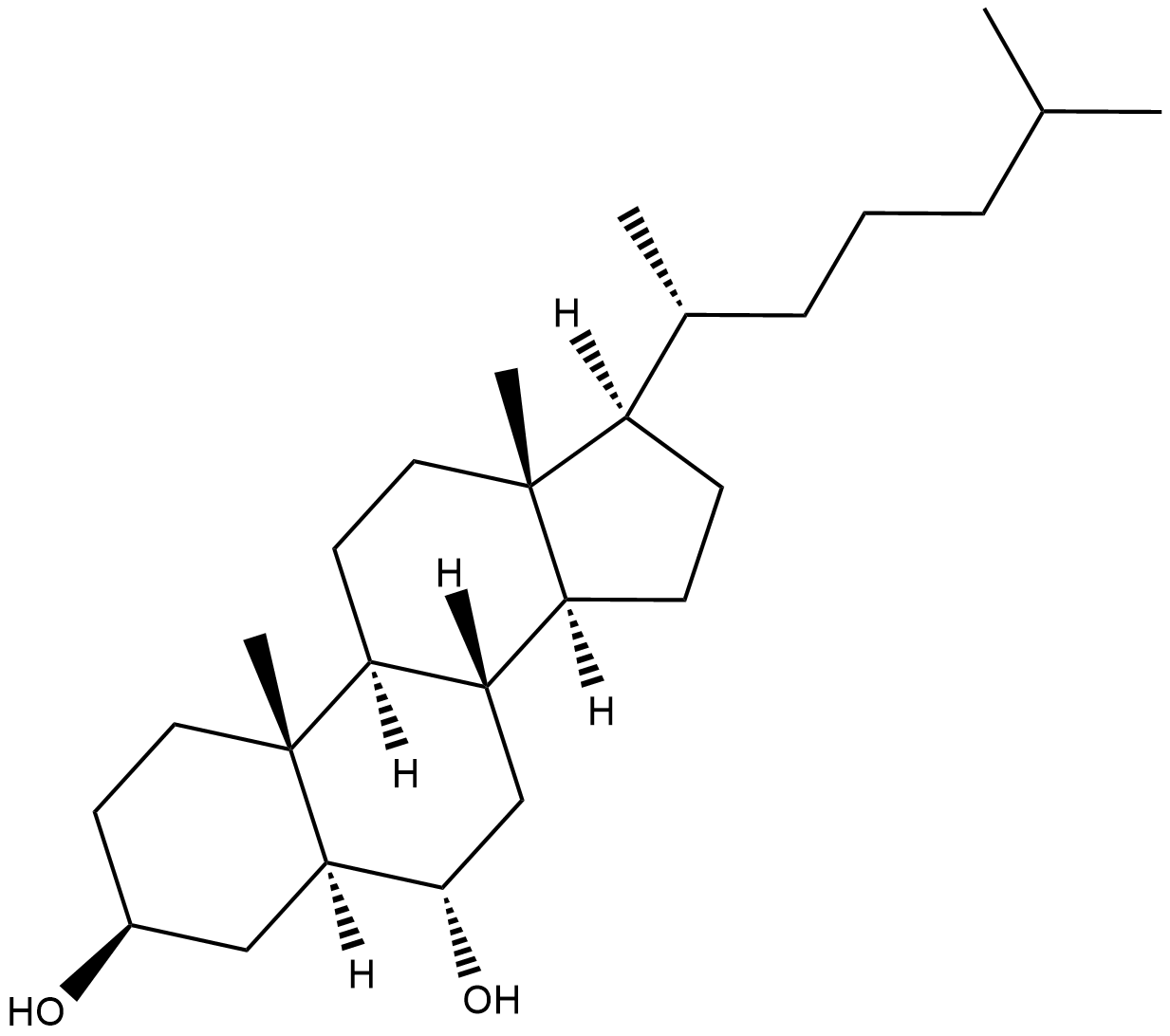
-
GC46080
7,3',4'-Trihydroxyflavone
7,3',4'-Trihydroxyflavon ist eine Flavonoid-Aglycon-Verbindung, die aus Ackerbohnenschoten isoliert wird.
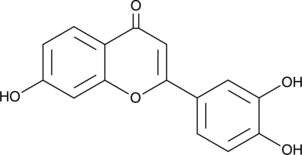
-
GC42627
8-Hydroxyguanine (hydrochloride)
8-Hydroxyguanine is produced by oxidative degradation of DNA by hydroxyl radical.
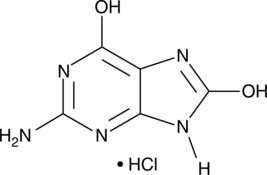
-
GC42642
9,10-Anthracenediyl-bis(methylene)dimalonic Acid
9,10-Anthracendiyl-bis(methylen)dimalonsÄure (ABMDMA) ist ein biologischer Farbstoff und Indikator, der zum Nachweis der Erzeugung von Singulett-Sauerstoff (SOG) verwendet wird. 9,10-Anthracendiyl-bis(methylen)dimalonsÄure ist ein wasserlÖsliches Derivat von Anthracen. 9,10-Anthracendiyl-bis(methylen)dimalonsÄure kann durch Photobleichen durch Singulett-Sauerstoff zu seinem entsprechenden Endoperoxid gebleicht werden. Diese Reaktion kann spektrophotometrisch Überwacht werden, indem die Abnahme der Extinktion bei 400 nm aufgezeichnet wird.
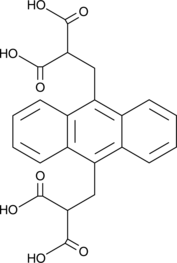
-
GC42649
9-Nitrooleate
Nitrated unsaturated fatty acids, such as 10- and 12-nitrolinoleate, cholesteryl nitrolinoleate, and nitrohydroxylinoleate, represent a new class of endogenous lipid-derived signalling molecules.
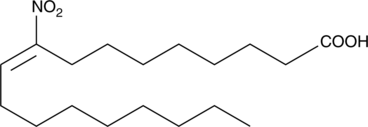
-
GC19496
AAPH
AAPH is a water-soluble azo compound

-
GC11786
Acetylcysteine
Acetylcystein ist das N-Acetyl-Derivat von Cystein.
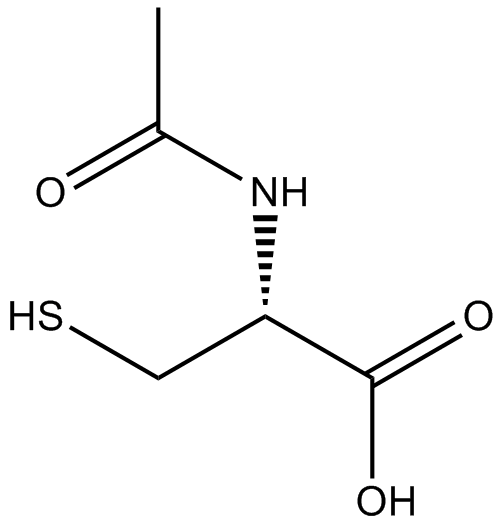
-
GN10298
Alibiflorin
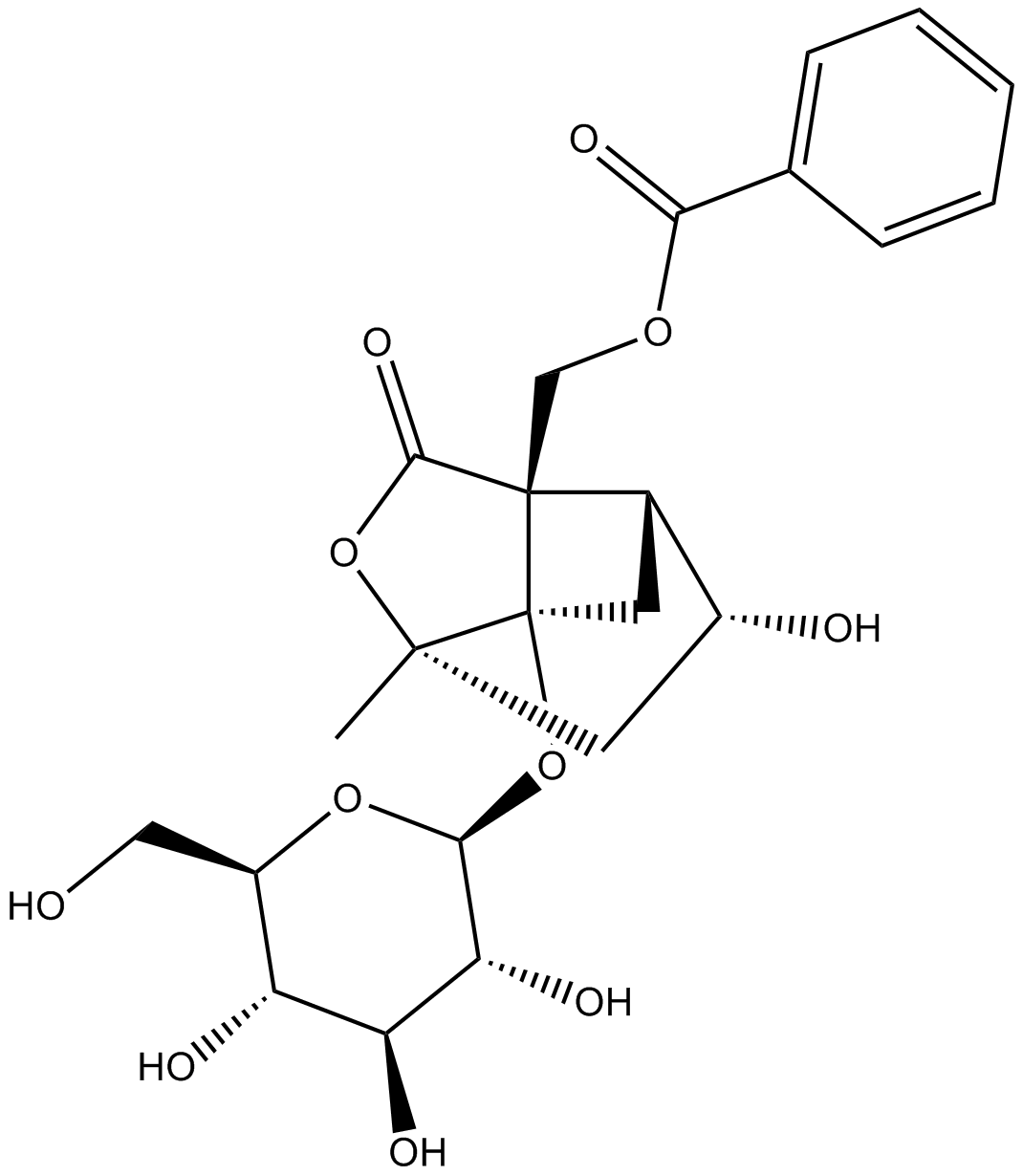
-
GC45379
Alloxan (hydrate)
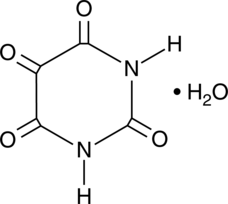
-
GC11443
Allylthiourea
Allylthiourea ist ein metabolischer Inhibitor, der die Ammoniakoxidation selektiv hemmt.
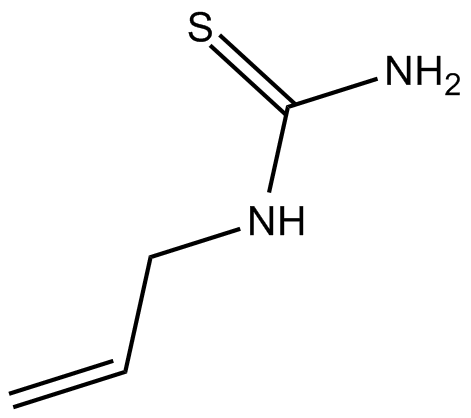
-
GC35306
alpha-Mangostin
Alpha-Mangostin (α-Mangostin) ist ein diÄtetisches Xanthon mit breiten biologischen AktivitÄten, wie z. B. antioxidative, antiallergische, antivirale, antibakterielle, entzÜndungshemmende und krebshemmende Wirkungen. Es ist ein Inhibitor der mutierten IDH1 (IDH1-R132H) mit einem Ki von 2,85 μM.
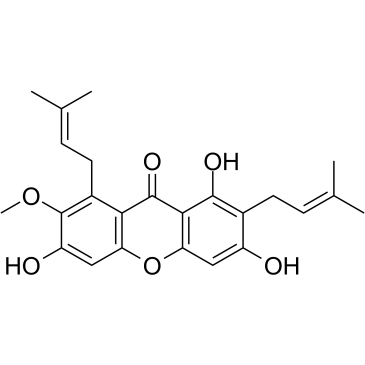
-
GN10484
Amentoflavone
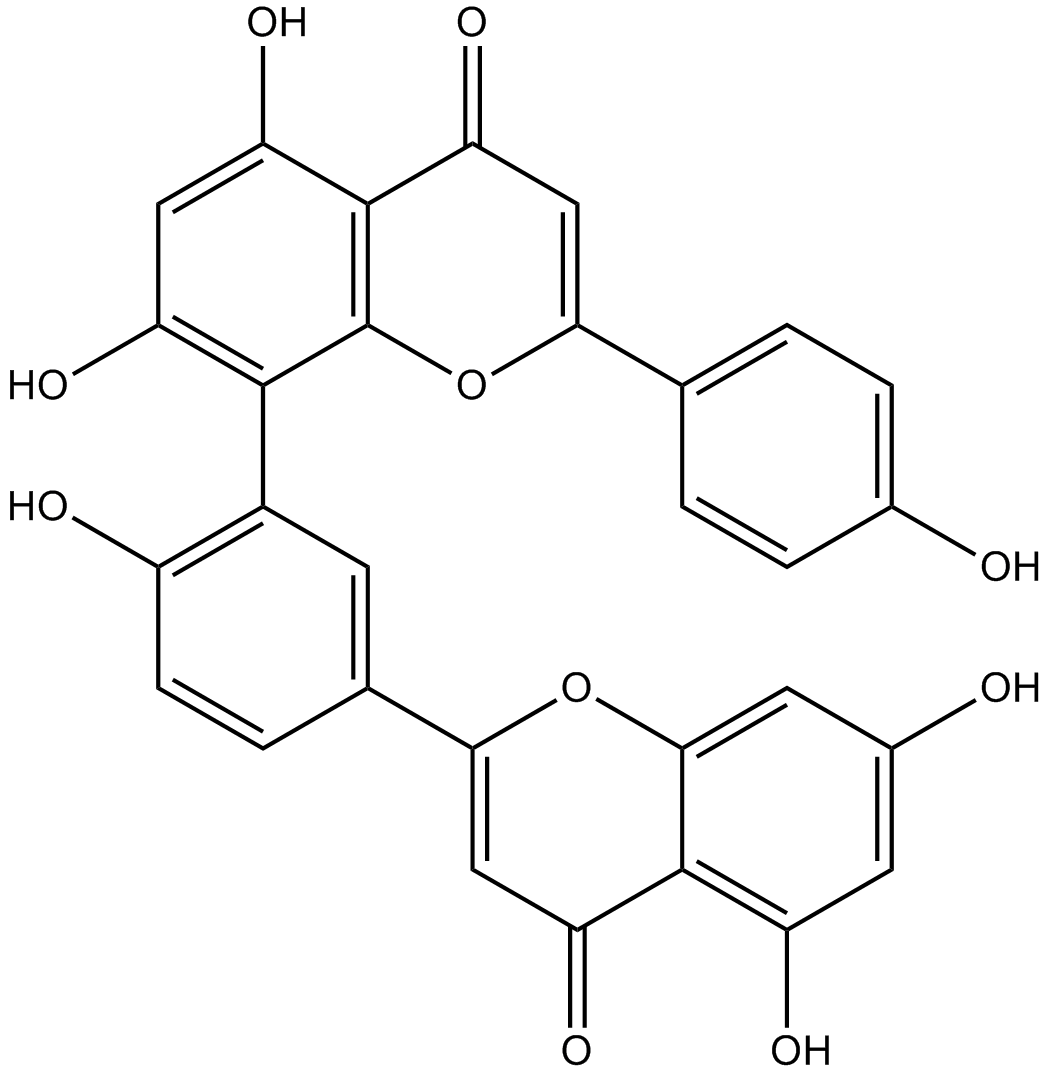
-
GC49336
AMK (hydrochloride)
An active metabolite of melatonin
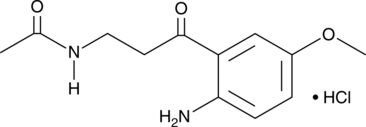
-
GC49259
Antagonist G (trifluoroacetate salt)
A neuropeptide antagonist
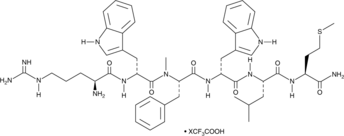
-
GC42825
APF
APF ist eine Fluoreszenzsonde, die selektiv und dosisabhÄngig bestimmte Spezies unter den ROS nachweisen kann, die hochgradig resistent gegen Autoxidation sind.
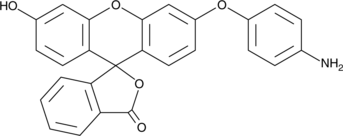
-
GN10509
Apigenin-7-O-β-D-glucopyranoside
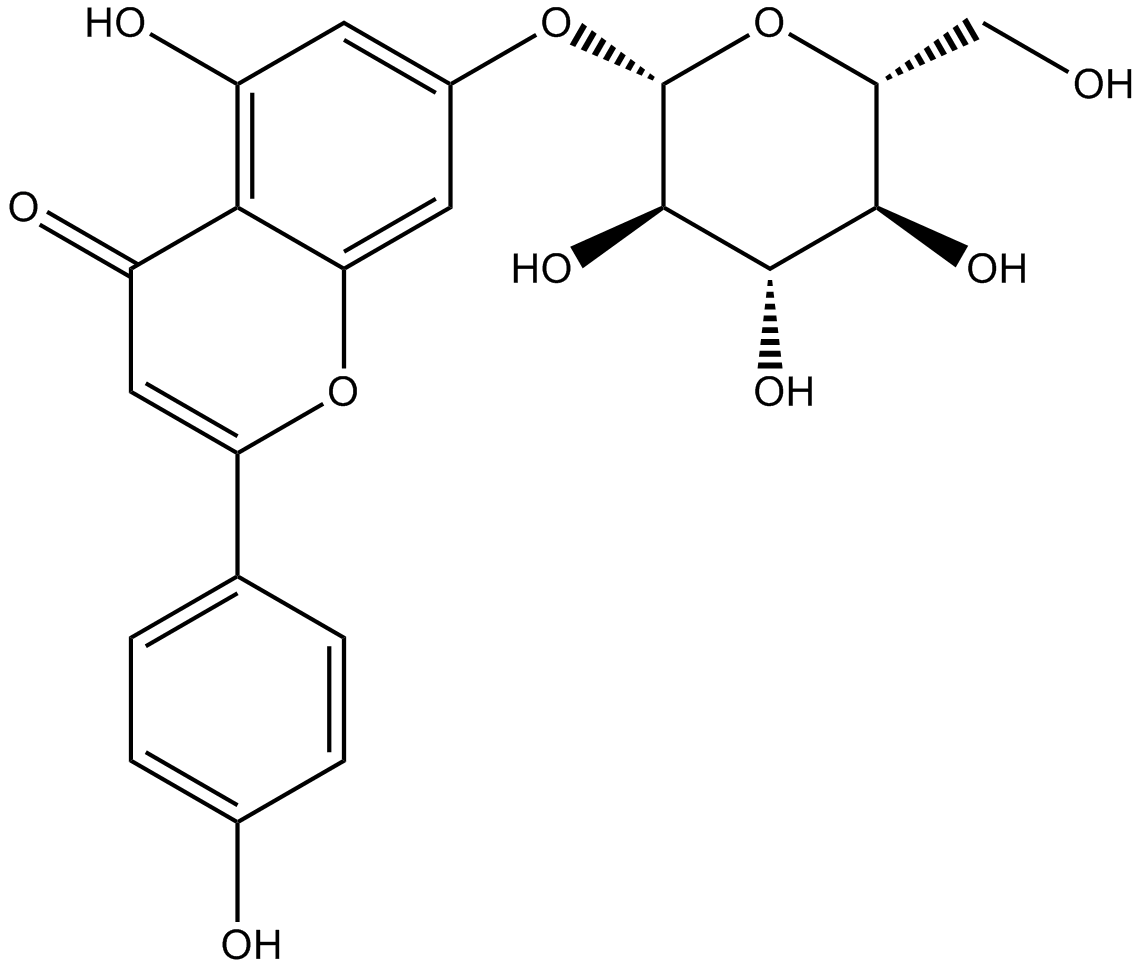
-
GC52332
Arimoclomol
A co-inducer of heat shock proteins
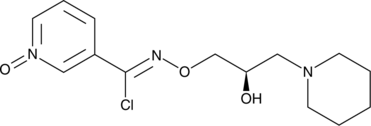
-
GC46005
Arjunolic Acid
ArjunolsÄure ist ein aus Symplocos lancifolia isoliertes Saponin und hat verschiedene biologische AktivitÄten, einschließlich antioxidativer, antimikrobieller, antibakterieller und entzÜndungshemmender AktivitÄten.
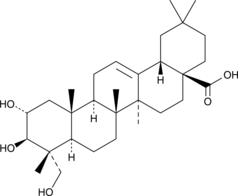
-
GC12070
Ascorbic acid
Ein Elektronendonator
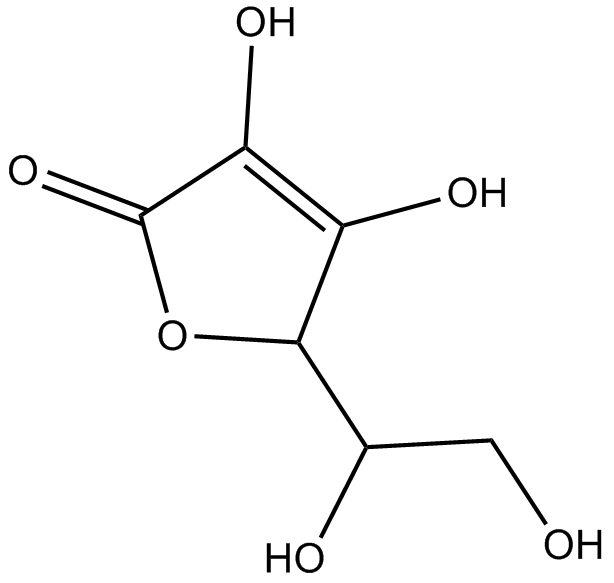
-
GN10534
Asiaticoside
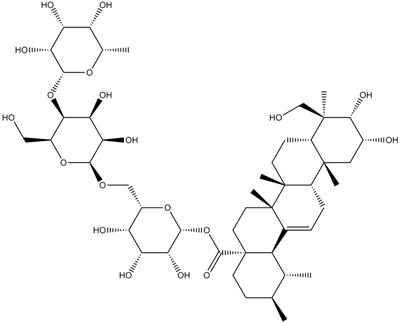
-
GC31350
Astaxanthin
Astaxanthin, das rote diÄtetische Carotinoid, ist ein oral wirksames und starkes Antioxidans.
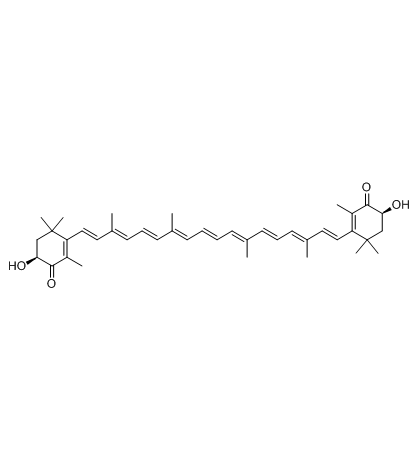
-
GC46904
Azoxystrobin
Azoxystrobin ist ein Breitspektrum-β-Methoxyacrylat-Fungizid.
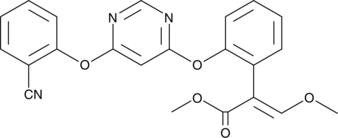
-
GC60616
AZT triphosphate
AZT-Triphosphat (3'-Azido-3'-desoxythymidin-5'-triphosphat) ist ein aktiver Triphosphat-Metabolit von Zidovudin (AZT).
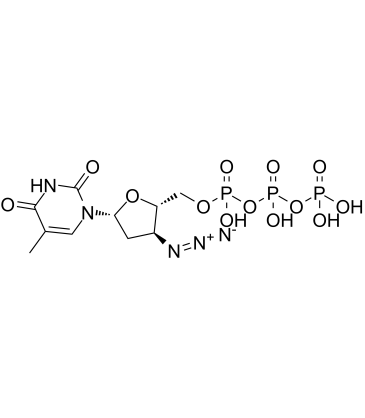
-
GC60617
AZT triphosphate TEA
AZT-Triphosphat TEA (3'-Azido-3'-desoxythymidin-5'-triphosphat TEA) ist ein aktiver Triphosphat-Metabolit von Zidovudin (AZT).
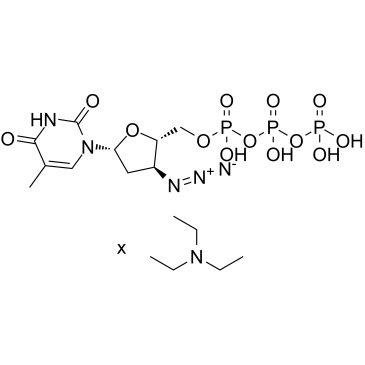
-
GC17574
BAPTA
BAPTA ist ein selektiver Chelatbildner fÜr Calcium.
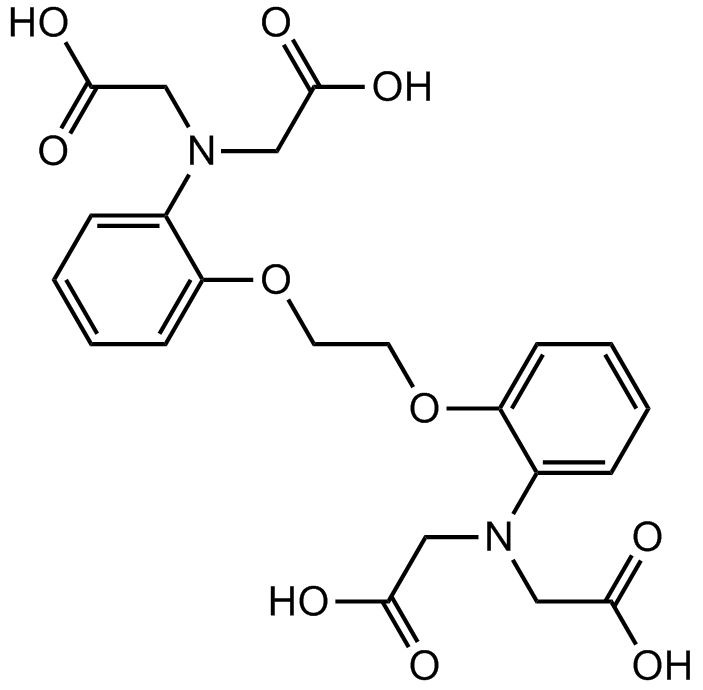
-
GC15949
Benfotiamine
A lipid-soluble form of vitamin B1
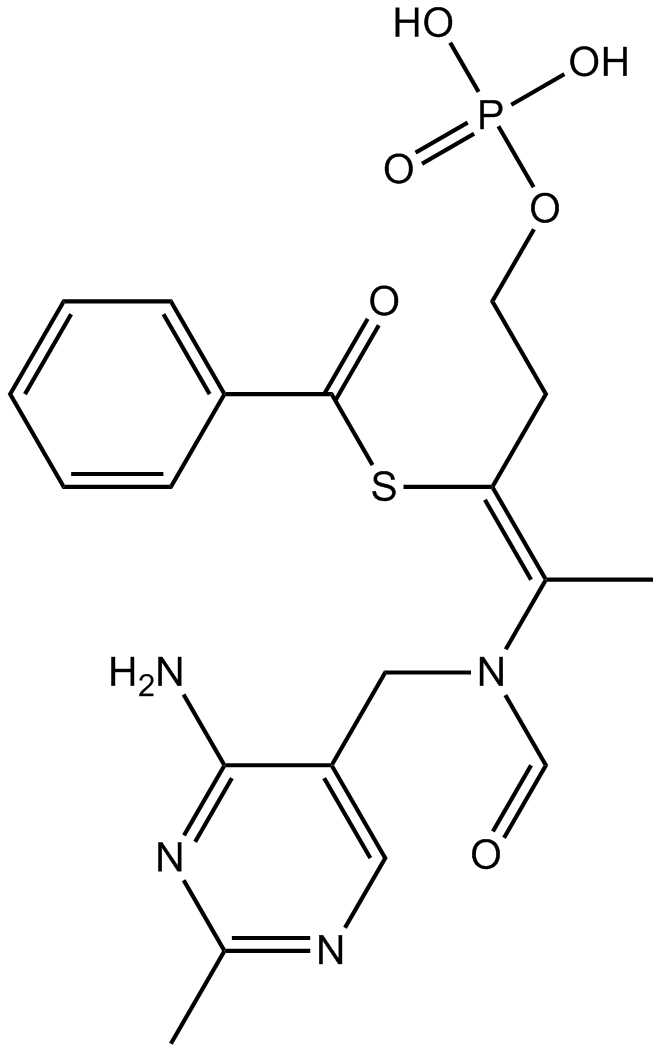
-
GN10221
Berberine
Berberin (Natürliches Gelb 18) ist ein Alkaloid, das aus der chinesischen Kräutermedizin Huanglian als Antibiotikum isoliert wird. Berberin (Natürliches Gelb 18) induziert die Bildung von reaktiven Sauerstoffverbindungen (ROS) und hemmt die DNA-Topoisomerase.
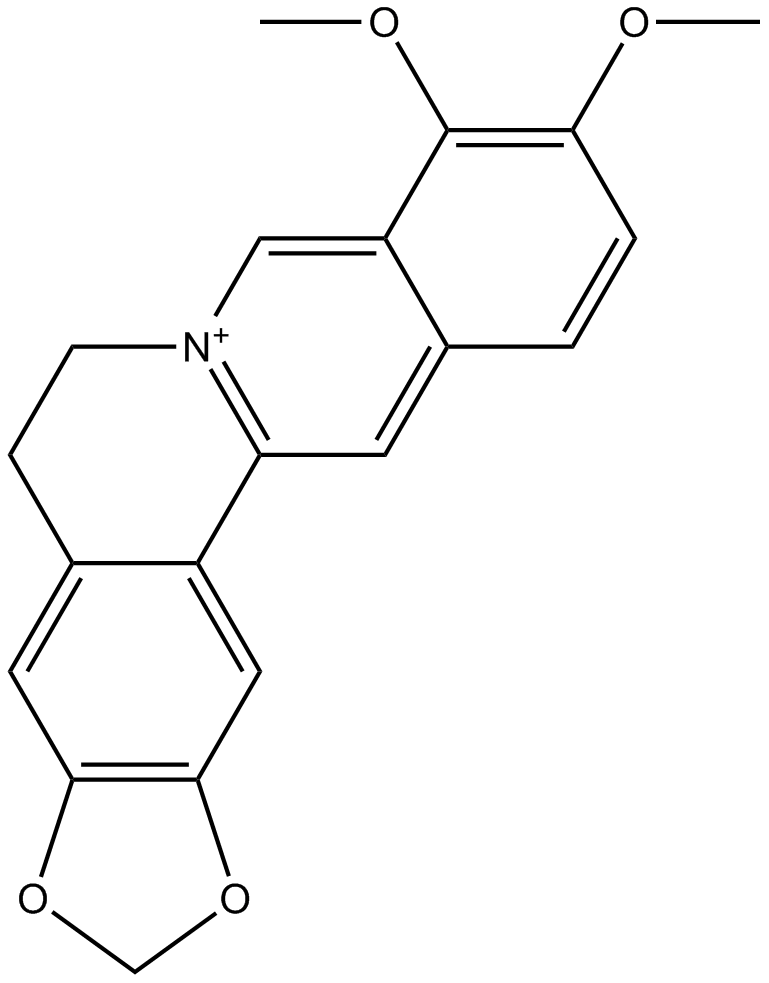
-
GC35497
Berberine chloride hydrate
Berberinchloridhydrat (Natural Yellow 18 Chloridhydrat) ist ein Alkaloid, das als Antibiotikum wirkt. Berberinchloridhydrat induziert die Bildung reaktiver Sauerstoffspezies (ROS) und hemmt die DNA-Topoisomerase. Antineoplastische Eigenschaften.
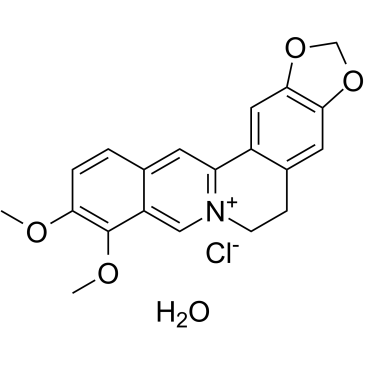
-
GN10208
Berberine hydrochloride
Berberine hydrochloride is an isoquinoline alkaloid derived from the Ranunculaceae medicinal plant Coptis chinensis. It has various pharmacological activities such as anti-tumor, anti-inflammatory, and hypoglycemic activities.
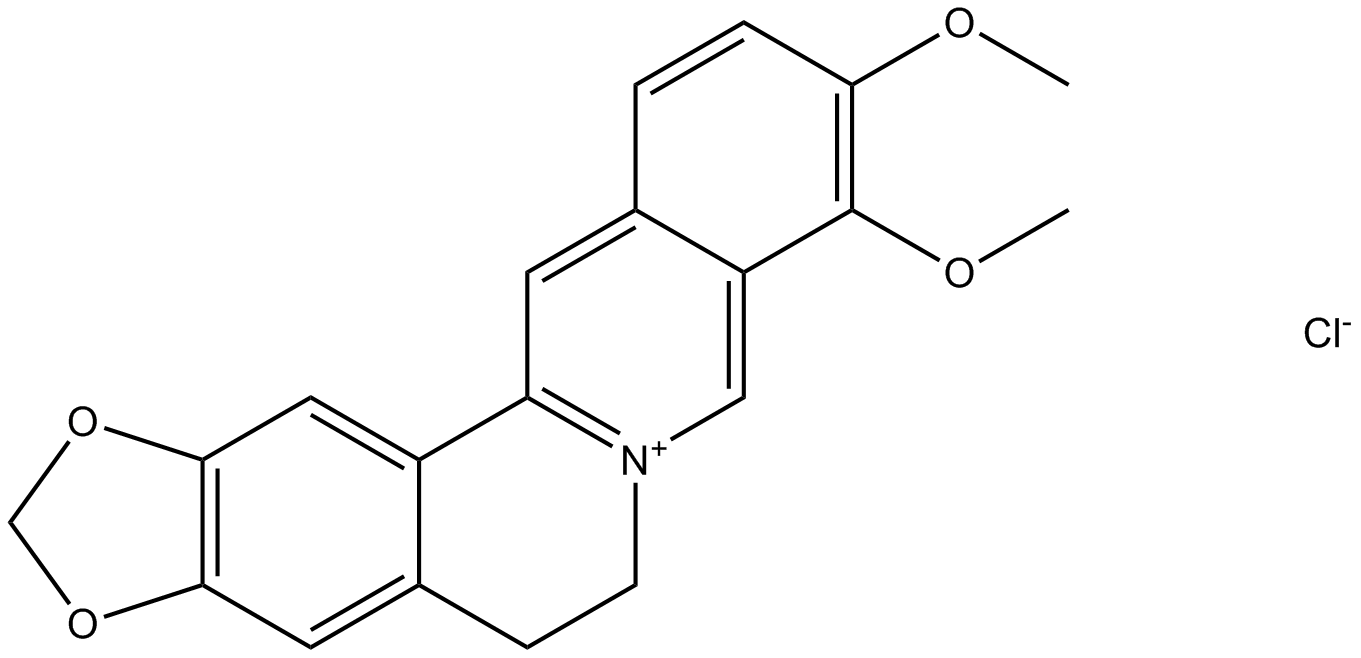
-
GN10523
Berberine Sulfate
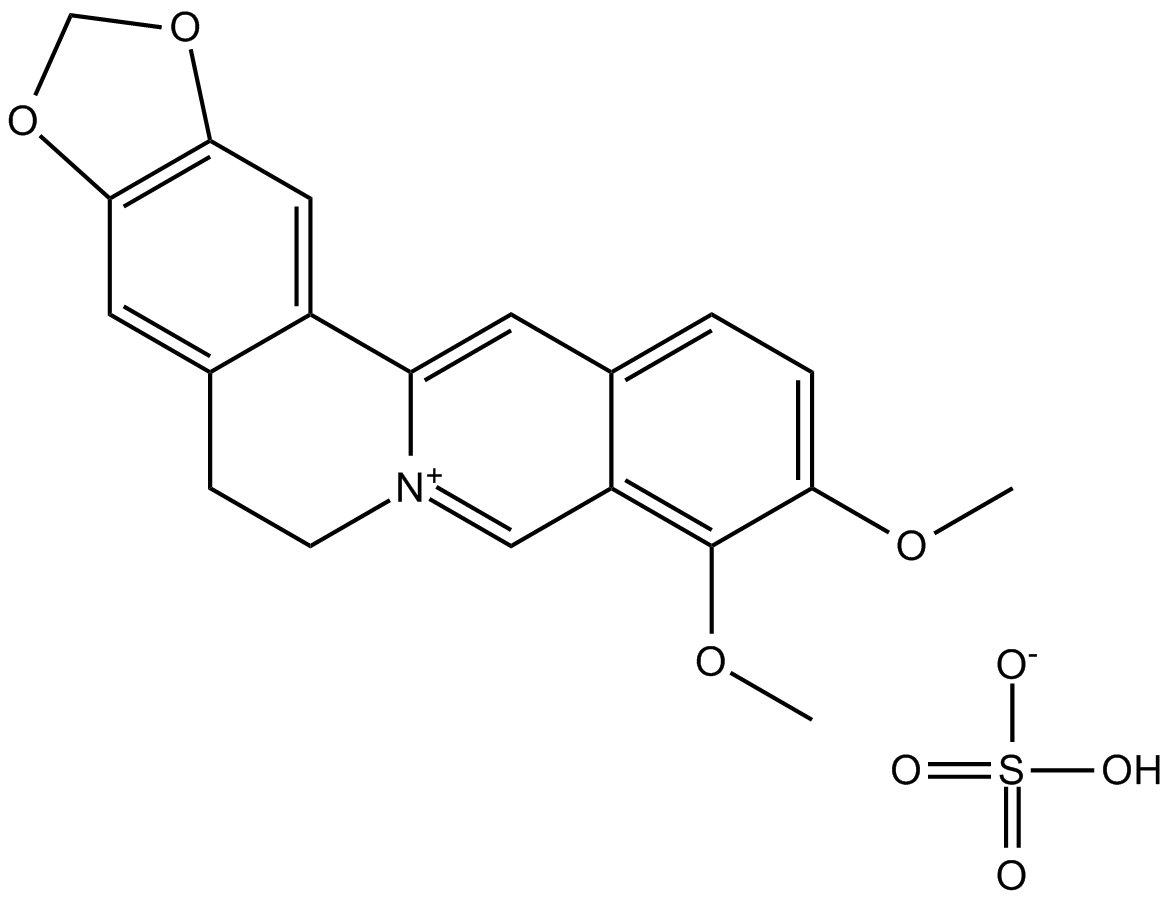
-
GC60076
Bigelovin
Bigelovin, ein aus Inula helianthus-aquatica isoliertes Sesquiterpenlacton, ist ein selektiver Retinoid-X-Rezeptor-α-Agonist. Bigelovin unterdrÜckt das Tumorwachstum durch Induktion von Apoptose und Autophagie Über die Hemmung des mTOR-Signalwegs, der durch die ROS-Erzeugung reguliert wird.
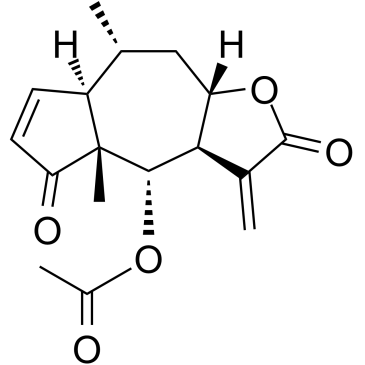
-
GC49708
Biliverdin (technical grade)
A bile pigment
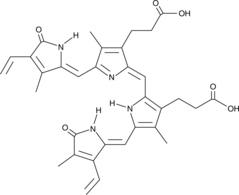
-
GC66485
Bis[3,4,6-trichloro-2-(pentyloxycarbonyl)phenyl] oxalate
Bis[3,4,6-trichlor-2-(pentyloxycarbonyl)phenyl]oxalat ist ein fluoreszierender Farbstoff, der zur Erzeugung von Chemilumineszenz verwendet werden kann.
![Bis[3,4,6-trichloro-2-(pentyloxycarbonyl)phenyl] oxalate Chemical Structure Bis[3,4,6-trichloro-2-(pentyloxycarbonyl)phenyl] oxalate Chemical Structure](/media/struct/GC6/GC66485.png)
-
GC35529
Bixin
Bixin (BX), isoliert aus den Samen von Bixa orellana, ist ein Carotinoid mit entzÜndungshemmenden, tumorhemmenden und antioxidativen Wirkungen.
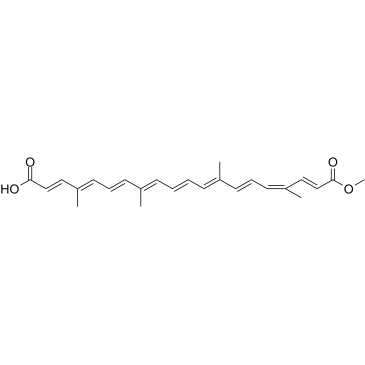
-
GC41397
BMPO
BMPO (BocMPO) ist eine zyklische Nitron-Spinfalle.
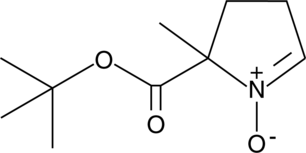
-
GC16921
Bromhexine HCl
Bromhexin-HCl ist ein potenter und spezifischer TMPRSS2-Protease-Inhibitor mit einem IC50-Wert von 0,75 μM.
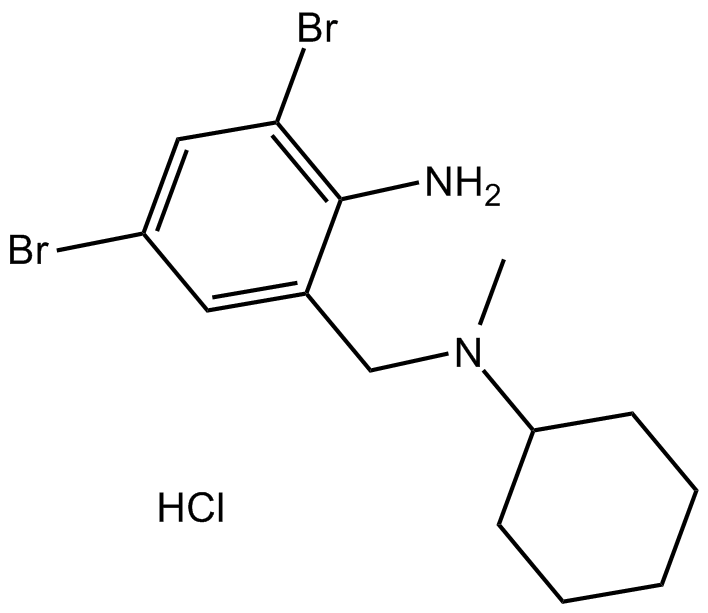
-
GC33134
Bufotalin
Bufotalin ist ein aus Venenum Bufonis isoliertes Steroidlacton mit starken AntitumoraktivitÄten. Bufotalin induziert die Apoptose von Krebszellen und induziert auch die Stressaktivierung des endoplasmatischen Retikulums (ER).
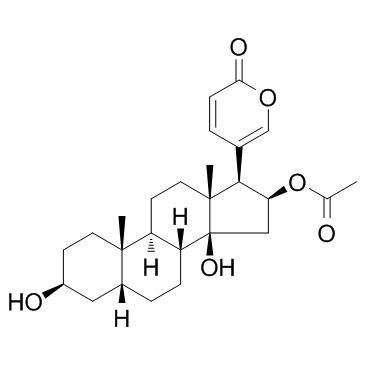
-
GC46960
Buprofezin
Buprofezin ist ein Insektizid, das durch Hemmung der Chitinsynthese wirkt.
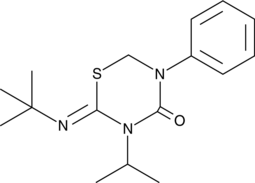
-
GC30067
Butylhydroxyanisole (Butylated hydroxyanisole)
Butylhydroxyanisol (Butylhydroxyanisol) (Butylhydroxyanisol) ist ein Antioxidans, das als Konservierungsmittel fÜr LebensmittelzusÄtze verwendet wird.
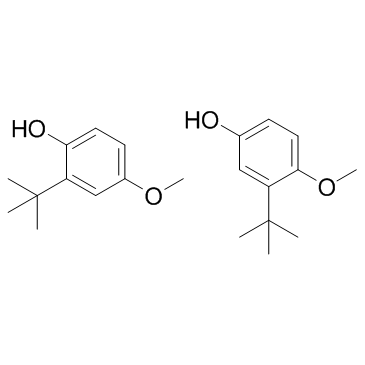
-
GN10356
Calycosin-7-glucoside
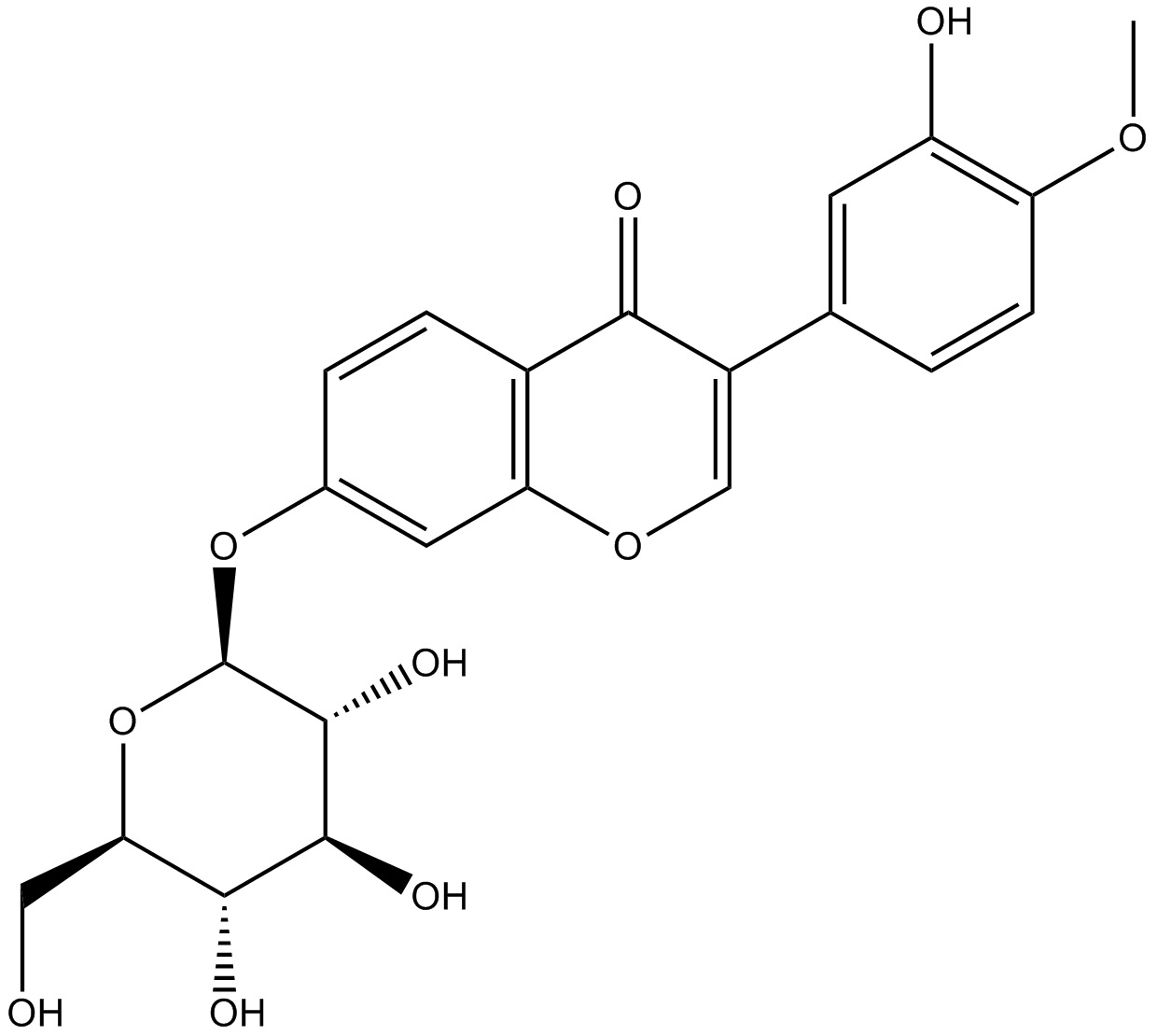
-
GC18922
Camalexin
Camalexin ist ein aus Camelina sativa (Cruciferae) isoliertes Phytoalexin mit antibakteriellen, antimykotischen, antiproliferativen und AntikrebsaktivitÄten.
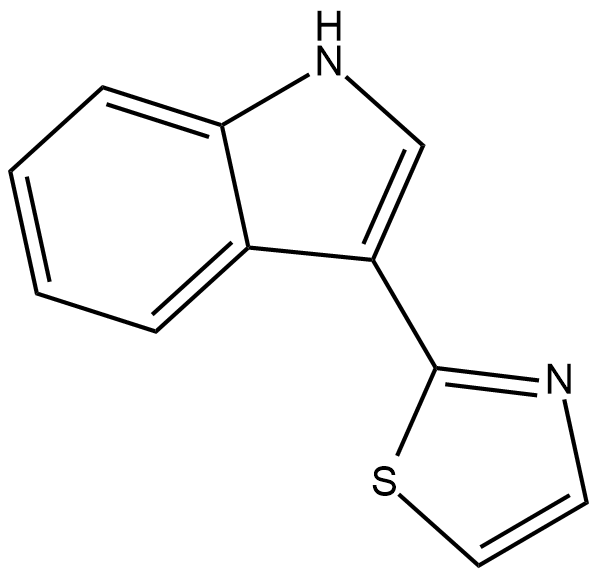
-
GC30495
Canthaxanthin (E 161g)
Canthaxanthin (E 161g) ist ein rot-orangefarbenes Carotinoid mit verschiedenen biologischen AktivitÄten, wie z. B. antioxidativen und Antitumor-Eigenschaften.
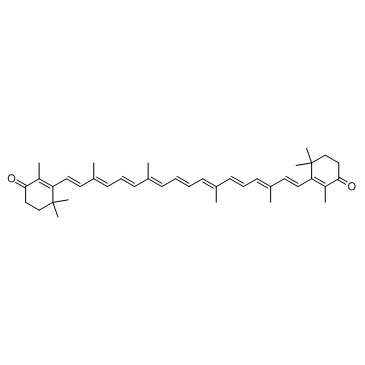
-
GC65429
Capillarisin
Capillarisin, als Bestandteil von Artemisiae Capillaris herba, hat nachweislich entzÜndungshemmende und antioxidative Eigenschaften.
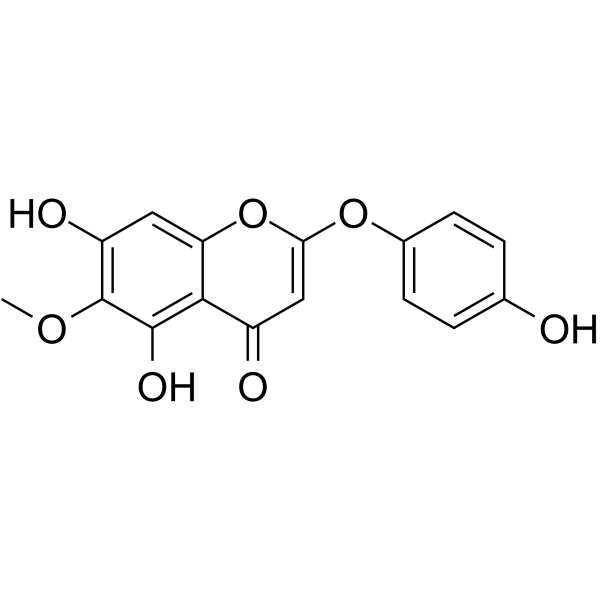
-
GC43139
Capsanthin
Capsanthin ist ein Carotinoid, das in C.

-
GC60674
Catalase from Aspergillus niger
Catalase is a key enzyme in the metabolism of H2O2 and reactive oxygen species (ROS), and its expression and localization is markedly altered in tumors.
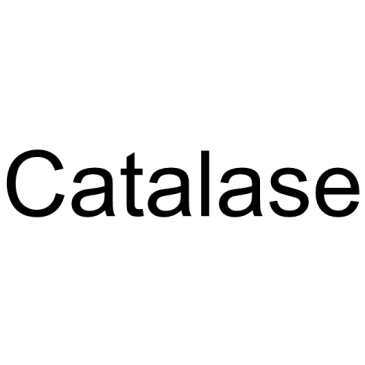
-
GC64933
Catalase from bovine liver
Catalase is a key enzyme in the metabolism of H2O2 and reactive oxygen species (ROS), and its expression and localization is markedly altered in tumors[1].
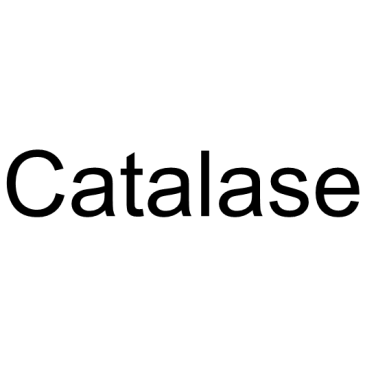
-
GC61865
Cearoin
Cearoin erhÖht die Autophagie und Apoptose durch die Produktion von ROS und die Aktivierung von ERK.

-
GC52081
Chamazulene
Chamazulen, eine natÜrliche Verbindung, ist ein antioxidativer Inhibitor der Leukotrien-B4-Bildung.

-
GC64993
Chicoric acid
ChicorinsÄure (CichorinsÄure), eine oral aktive DicaffeylweinsÄure, induziert die Bildung reaktiver Sauerstoffspezies (ROS).



